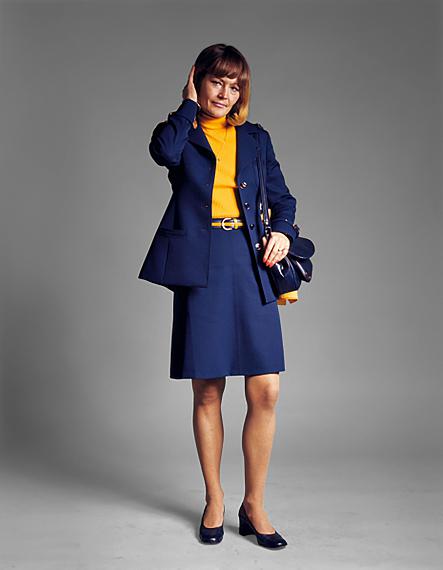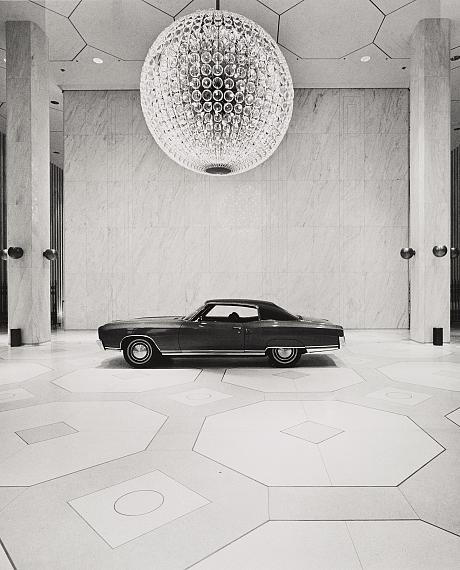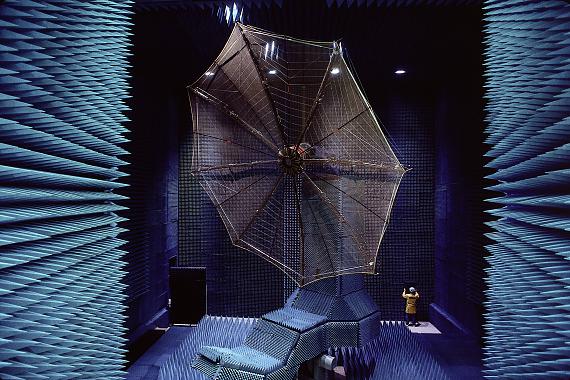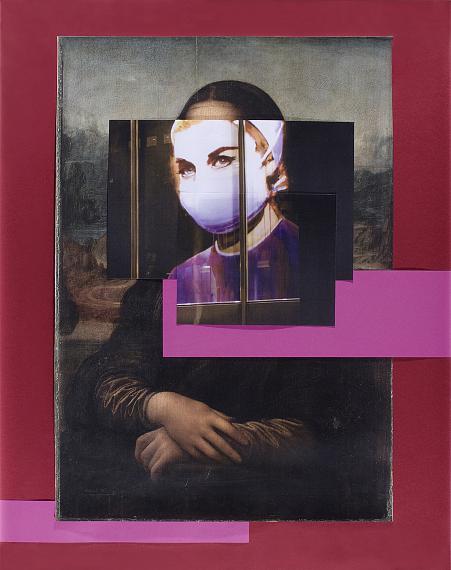
Liane Schneider, 33, Ground-Hostess, Deutsche Lufthansa, 1974
from: Germans in Uniform
C-Print, 28,7 x 22 cm
Courtesy the Artist
© Timm Rautert
Timm Rautert »
Timm Rautert and the Lives of Photography
Timm Rautert und die Leben der Fotografie
Exhibition: 11 Mar – 16 May 2021

Museum Folkwang
Museumsplatz 1
45128 Essen
+49 (0)201-8845444
info@museum-folkwang.essen.de
www.museum-folkwang.de
Tue-Sun 10-18, Thu + Fri 10-20

New York City, 1969
Gelatine silver print, 27,5 x 28,8 cm
Courtesy of the Artist © Timm Rautert
Timm Rautert and the Lives of Photography
Exhibition: 11 March – 16 May 2021
The Museum Folkwang presents a comprehensive retrospective of photographer Timm Rautert’s oeuvre. The exhibition "TIMM RAUTERT AND THE LIVES OF PHOTOGRAPHY" spans five decades of his artistic production: beginning with Rautert’s experimental early work as a student of Otto Steinert, it shows his famous portrait series such as Deutsche in Uniform (Germans in Uniform) or Eigenes Leben (A Life of One`s Own), as well as his artwork collages and his 2015 photographic installation work L’Ultimo Programma. The nearly 350 works illustrate not only the thematic and methodological versatility of Rautert’s oeuvre, but can also be read as documents of photography’s long journey into the museum and the art canon.
Timm Rautert (born in 1941 in Tuchola, then West Prussia) is considered one of Germany’s preeminent contemporary photographers. Over the decades he has succeeded not only in anticipating the most important trends in photography, but has also played a major role in shaping them: as a studio photographer for galleries, as a photojournalist, as a chronicler of changing work environments and, finally, as a university lecturer, he has influenced ensuing generations.
As a student of Otto Steinert at the Folkwangschule in Essen, Rautert quickly developed solid foundations for a committed, social-documentary photography. Alongside this, he explored the fundamentals of photography and developed his "Image- Analytical Photography", which has methodically permeated his artistic work to this day. For Rautert, alternating between applied and artistic elements is not a contradiction, but an expression of resolute photographic authorship.
In 1970, Rautert travelled to the USA and photographed figures such as Franz Erhard Walther, Andy Warhol and Walter de Maria. In Osaka, he documented the World’s Fair and the deeply traditional Japanese society of the time. From the mid-1970s, Rautert worked together with the journalist Michael Holzach on joint reportages for ZEITmagazin. For over a decade he produced social documentary reportages on migrant workers, the homeless, or previously inaccessible communities like The Hutterites (1978) and The Amish (1974).
In the 1980s, Rautert turned to documenting working environments in the automobile and computer industries, creating a long-term chronicle of the transformation of the workplace in the wake of industrial automation. Around 70 photographs from the series Gehäuse des Unsichtbaren (Houses of the Invisible) with photographs of research and manufacturing sites such as the Max Planck Institute (1988) or Siemens AG (1989) are being presented for the first time in a digital double projection, which Rautert developed specially for the exhibition at Museum Folkwang.
In 2008, Timm Rautert was the first photographer to receive the Lovis Corinth Prize for his life’s work.
Catalogue
Steidl Verlag: Timm Rautert and the Lives of Photography
Published by the Museum Folkwang and Bombas Gens.
520 pages, 328 images
ISBN 978-3-95829-928-3

Messerschmitt-Bölkow-Blohm GmbH, Ottobrunn, 1989
from: Houses of the Invisible
Digital projection, variable size
Courtesy the Artist © Timm Rautert
Timm Rautert und die Leben der Fotografie
Ausstellung: 11. März bis 16. Mai 2021
Das Museum Folkwang präsentiert eine umfassende Werkschau des Fotografen Timm Rautert. Die Ausstellung Timm Rautert und die Leben der Fotografie umfasst fünf Jahrzehnte seines fotografisch künstlerischen Schaffens: Sie beginnt bei Rauterts experimentellen Anfängen als Student Otto Steinerts, zeigt berühmte Porträtserien wie Deutsche in Uniform und Eigenes Leben und reicht bis zu seinen Artwork-Collagen und zur Rauminstallation L´Ultimo Programma aus dem Jahr 2015. Die rund 350 Arbeiten veranschaulichen nicht nur die thematische und methodische Vielfalt in Rauterts Werk, sondern lassen sich auch als Dokumente des langen Wegs der Fotografie hinein ins Museum und in den Kanon der Kunst lesen.
Timm Rautert (*1941 Tuchel, Westpreußen) gilt als einer der herausragenden deutschen Fotografen der Gegenwart. Über Jahrzehnte hinweg gelingt es ihm, die wichtigsten Strömungen in der Fotografie nicht nur zu antizipieren, sondern entscheidend mitzuprägen – als Studiofotograf für Galerien, als Bildjournalist, als Chronist der sich verändernden Arbeitswelten und schließlich als Hochschullehrer, der nachfolgende Generationen beeinflusst.
Als Student unter Otto Steinert an der damaligen Folkwangschule in Essen-Werden erarbeitet sich Rautert rasch ein solides Fundament für eine engagierte, sozialdokumentarische Fotografie. Parallel dazu erforscht er die Grundlagen des Fotografischen und entwickelt die „Bildanalytische Photographie“, die sein künstlerisches Werk methodisch bis heute durchdringt. Der Wechsel zwischen angewandten und künstlerischen Momenten ist in Rauterts Verständnis kein Widerspruch, sondern vielmehr Ausdruck einer dezidierten, fotografischen Autorschaft.
1970 reist Rautert in die USA und fotografiert u. a. Franz Erhard Walther, Andy Warhol und Walter de Maria. In Osaka dokumentiert er die Weltausstellung und die in ihren Traditionen behaftete japanische Gesellschaft. Ab Mitte der 1970er Jahre arbeitet Rautert zusammen mit dem Journalisten Michael Holzach an gemeinsamen Reportagen für das ZEITmagazin. Über ein Jahrzehnt lang entstehen sozialdokumentarische Reportagen, z. B. über Arbeitsmigranten, Obdachlose oder bislang unzugängliche Gruppierungen wie The Hutterites (1978) und The Amish (1974).
In den 1980er Jahren wendet sich Rautert der Dokumentation von Arbeitswelten in der Auto- und Computerindustrie zu und schafft eine Langzeitdokumentation der sich verändernden Arbeitswelt im Zuge der industriellen Automatisierung. Rund 70 Fotografien der Werkgruppe Gehäuse des Unsichtbaren mit Fotografien von Forschungs- und Produktionsstätten wie dem Max Planck Institut (1988) oder der Siemens AG (1989) werden erstmals in einer digitalen Doppelprojektion präsentiert, die Rautert eigens für die Ausstellung im Museum Folkwang entwickelt hat.
2008 erhält Timm Rautert als erster Fotograf den Lovis Corinth-Preis für sein künstlerisches Lebenswerk.
Gefördert von Stiftung Presse-Haus NRZ und Kulturstiftung Essen.
Katalog
Steidl Verlag: Timm Rautert und die Leben der Fotografie
Hg. Museum Folkwang, Bombas Gens.
520 Seiten, 328 Abbildungen
ISBN 978-3-95829-928-3

Mona Lisa, 2010
Mixed media collage, offset print, cardboard, 80,5 x 63 cm
Courtesy the Artist © Timm Rautert